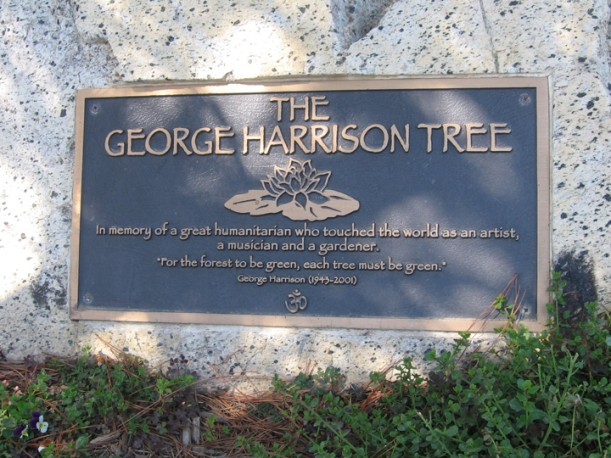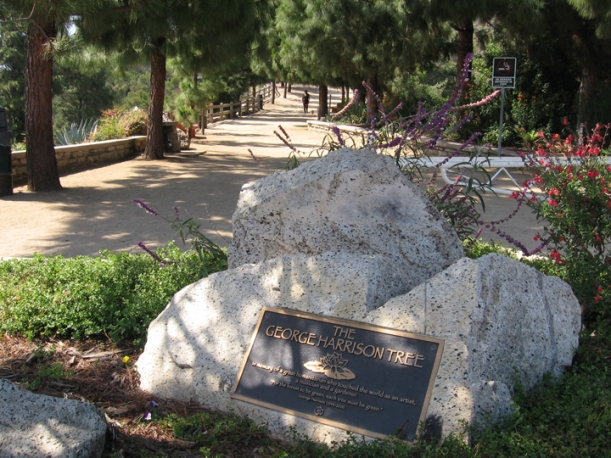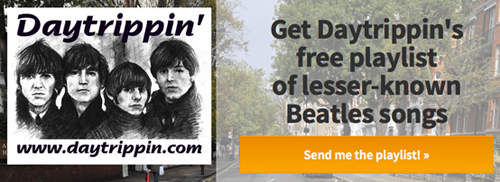
For over 30 years, Beatles fans have been gathering at Strawberry Fields in Central Park to celebrate John Lennon’s life on his birthday, October 9, and also to mourn his death on December 8.
Located across the street from the Dakota apartment building where John Lennon lived with Yoko Ono, Strawberry Fields encompasses the pathways in Central Park that John and Yoko used to stroll together over the years from 1973 until Lennon was gunned down in front of the building in 1980.
Five years after his death, on October 9, 1985, what would have been Lennon’s 45th birthday, this tear-shaped section of Central Park stretching from 71st to 74th streets along Central Park West was re-named “Strawberry Fields” after The Beatles’ song “Strawberry Fields Forever.” The famous grey and white marble Imagine mosaic, which is the centerpiece of the area, was a gift from the city of Naples, Italy.

The groundbreaking ceremony for Strawberry Fields was held on March 21, 1984 with Yoko Ono and Lennon’s sons Julian and Sean in attendance. A bronze plaque which was unveiled at the dedication ceremony lists 121 countries who endorse this Garden of Peace.
The idea for ‘Strawberry Fields’ was conceived by Yoko Ono and she “selected an ancient mosaic design found in Naples and placed the word Imagine in the center,” according to author Sara Cedar Miller. “The people of Naples were delighted, and artisans were dispatched to Strawberry Fields to inlay the Imagine mosaic medallion, faithfully copying the design Yoko had chosen.”
While most people think of the Imagine mosaic section as the major part of Strawberry Fields, there are actually 5.3 acres in total that make up the whole of the area. For the landscape design of this section of Central Park, Yoko worked with landscape architect, Bruce Kelly, to create a fitting memorial to John Lennon that was “more nature than culture.”

Yoko’s letter in the NY Times on August 19, 1981
In August 1981, Ono placed letters in the New York Times and many other newspapers asking for donations from other countries to create this peace garden. Many countries sent native plants; for example, an oak tree from Great Britain, dogwoods from Monaco, tulip bulbs from the Netherlands, maples from Canada, etc. And, of course, strawberries were planted by the Central Park Conservancy.
The area is shaded by elm trees and provides many benches for visitors to relax and “imagine.” Strawberry Fields is intended as a quiet place for reflection, designated as a “quiet zone” in the Park. In exchange for a generous donation to the Central Park Conservancy, patrons can get their name inscribed on a plaque on one of the benches.
Yoko Ono still lives in the Dakota and her windows overlook the Imagine mosaic at 72nd street and Central Park West. While the word “Imagine” is recognized for Lennon’s famous song first released in 1971, it is also a concept that Ono has portrayed in her artwork long before she met Lennon. He even admitted that he got the idea for the song from her.
The song “should be credited as a Lennon-Ono song, because a lot of it, the lyric and the concept, came from Yoko,” John Lennon said in a 1980 interview, shortly before he died.

In 2017, the National Music Publishers Association announced that Ono would share songwriting credits for Lennon’s “Imagine.”
“Those days, I was a bit more selfish, a bit more macho, and I sort of omitted to mention her contribution,” Lennon added, noting that the song makes direct reference to Yoko’s 1964 book, Grapefruit.
It was Yoko’s intention to continue the world peace sentiment that she and Lennon had initiated in 1969 which included planting an acorn in England and then sending acorns to heads of state around the world. In her 1981 letter, Ono said, “John would have been very proud that this was given to him, an island named after his song, rather than a statue or a monument….It will be nice to have the whole world in one place, one field, living and growing together in harmony.”
Note:
A book called Strawberry Fields: Central Park’s Memorial to John Lennon chronicles the creation of this memorial. The book, released in 2011, was written by Sara Cedar Miller, the official photographer and historian of the Central Park Conservancy. The 95-page book is filled with gorgeous color photos as well as historical documents and black & white photos.
The Central Park Conservancy also sells souvenirs of the Imagine mosaic, including a blanket, coffee mug and jewelry.
***







 It all started with Yoko Ono’s 1964 book,
It all started with Yoko Ono’s 1964 book, 